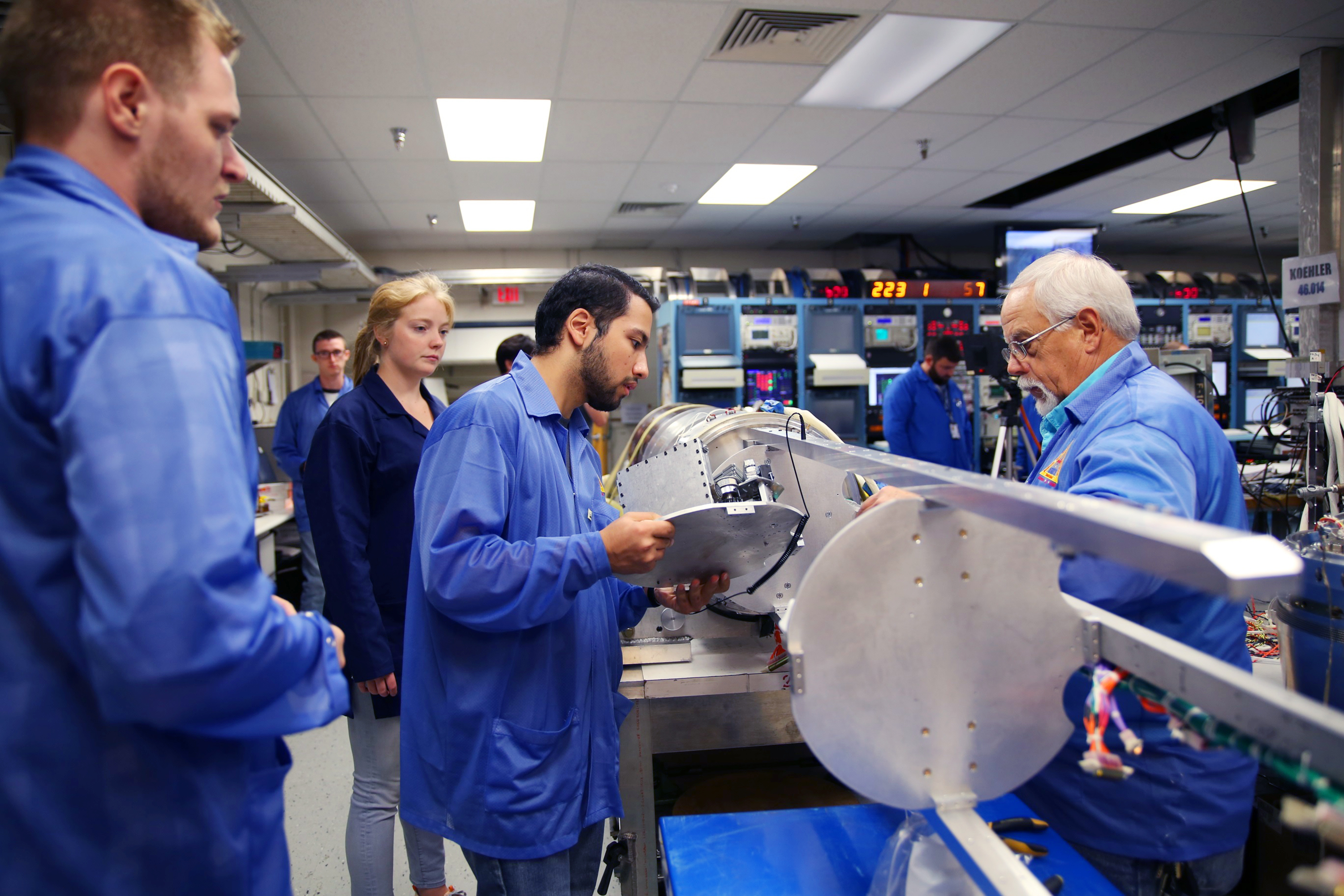
University of Nebraska-Lincoln students are getting a taste of what it’s like to work on a NASA engineering team, thanks to an unusual $200,000 grant awarded by the agency in collaboration with the NASA Nebraska Space Grant Consortium.
During the next 18 months, a team of about 20 students will design and build a retractable boom suitable for a space vehicle. The mechatronic device will feature built-in solar panels that would open and activate as the boom is deployed.
The Nebraska team is one of 47 nationwide chosen to receive grants through NASA’s Undergraduate Student Instrument Project program. Although the USIP program is not new, this is the first year that grants of this size have been disbursed through Space Grant agencies throughout the United States. Eighty-nine teams competed for a share of about $8 million in funding.
The grant is among the largest NASA has given to support undergraduate research in this particular program, according to Scott Tarry, director of the NASA Nebraska Space Grant Consortium, based at the University of Nebraska at Omaha. It is also the largest amount given to the University of Nebraska-Lincoln during its 10 years participating in NASA undergraduate research programs.
“This is huge for us. This is $200,000 for a student project,” said Taylor Kerl, a senior mechanical engineering major who is the project manager. “It’s really exciting to be a part of it. It will be influential on NASA as well as students.”
The program’s aim is to expose students to how engineering teams work in NASA and other professional settings, said Karen Stelling, a College of Engineering faculty adviser to Nebraska’s student Aerospace Club and the USIP team. The students will be schooled in project management techniques; they will have to create succession plans to replace leaders and team members as they graduate or otherwise move on; and they will have to adhere to a budget. The team will include finance, economics, mathematics and physics majors along with engineering students.
Nebraska Engineering faculty Kevin Cole and Carl Nelson also are providing advice and guidance to the team. Cole is co-adviser of the Aerospace Club and Nelson advises the Air and Space Research Club, whose students have been involved in microgravity research projects with NASA.
The Aerospace Club was previously called the American Institute of Aeronautics and Astronautic Club. The USIP project builds upon the past experiences of some club members with experimental rocket payloads, but also provides three college credits for project management and technical skills and four paid internships during summer 2017.
The arrangement benefits NASA as well as the university, Tarry said.
“NASA has the capacity to help universities provide experiential learning opportunities that help recruit and retain students in science, technology, engineering and mathematics fields,” Tarry said. “And by engaging students with what NASA is doing, NASA has a fighting chance to get talented young people on the path to a NASA career.”
Many of the students involved in the club aspire to NASA careers.
“That would be the dream – of course, definitely,” said Brandon Warren, a sophomore mechanical engineering student who is on the project’s mechanical sub-team.
The project faces several design challenges, Kerl and others said. The device must mechanically extend to at least four times the diameter of its base plate, yet avoid throwing the rocket out of balance as it opens in a low-gravity environment. It needs to be sturdy enough to support solar panels yet pliable enough to be repacked into the payload bay at mission’s end. It needs to be lightweight yet capable of surviving the stresses of space flight for reuse with future launches.
At a recent brainstorming session in Nebraska Hall, team members discussed springs and hinges, umbrella-style mechanisms, rack and pinions, roll-up movie screens, even retractable carpenter’s tape measures.
Although the device is to be tested on a small, unmanned research rocket in early 2018, it should be adaptable to other spacecraft and to other tools that might be needed in space exploration.
“I’m excited by how massive this is, how long-term this is, compared to anything I’ve ever worked on before,” Warren said.









